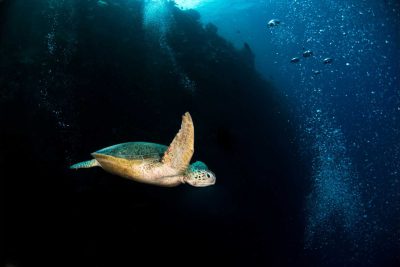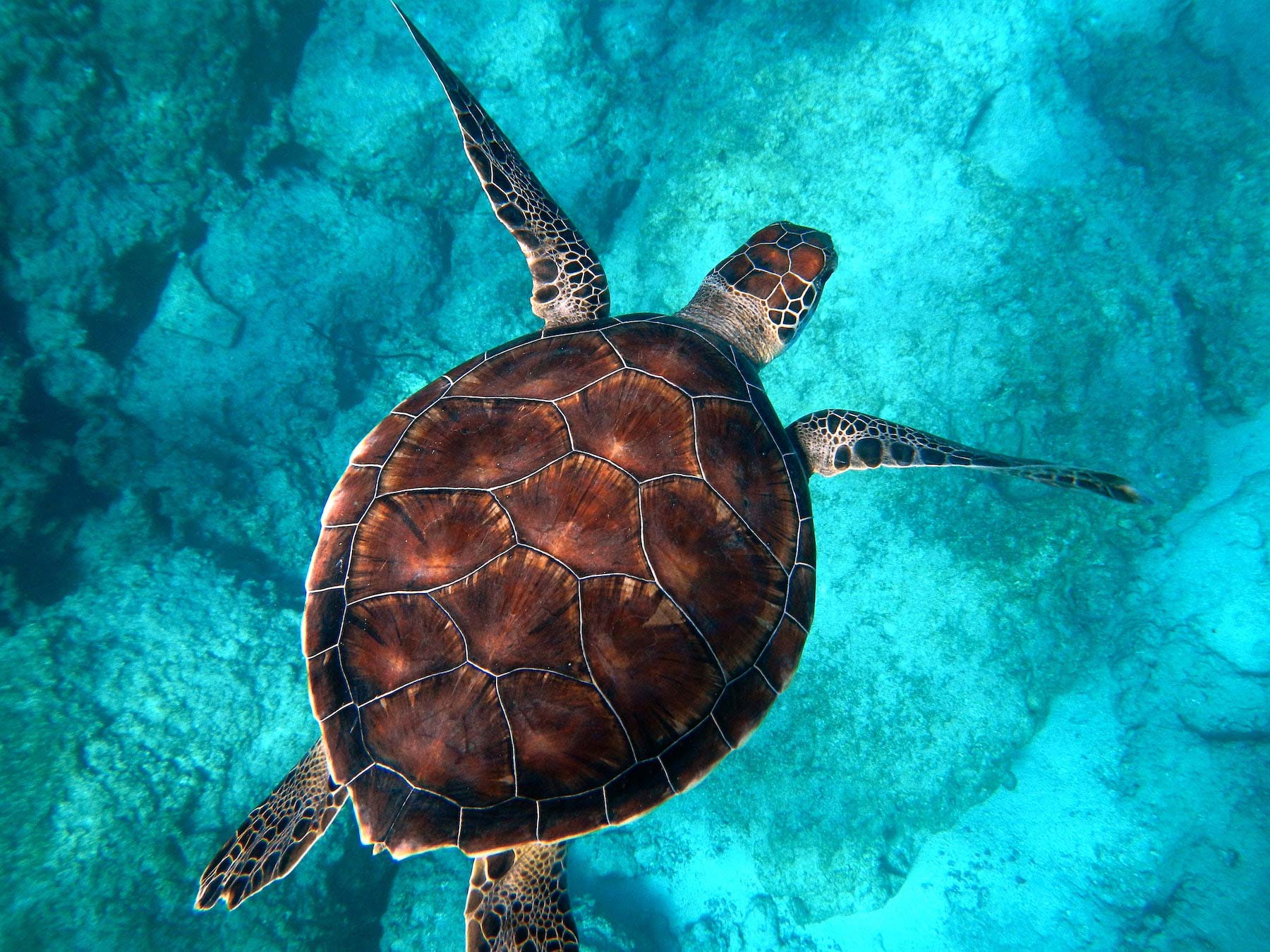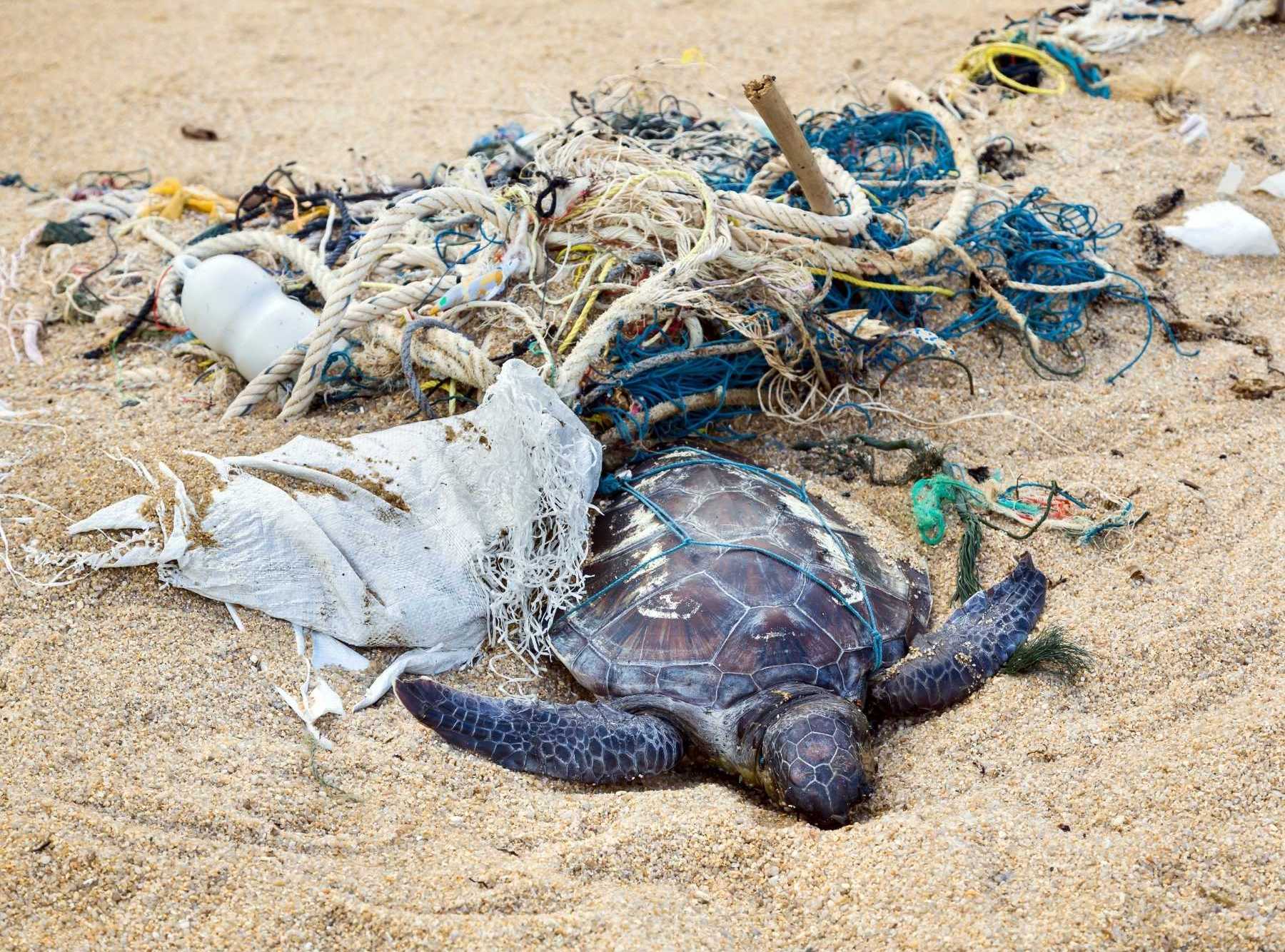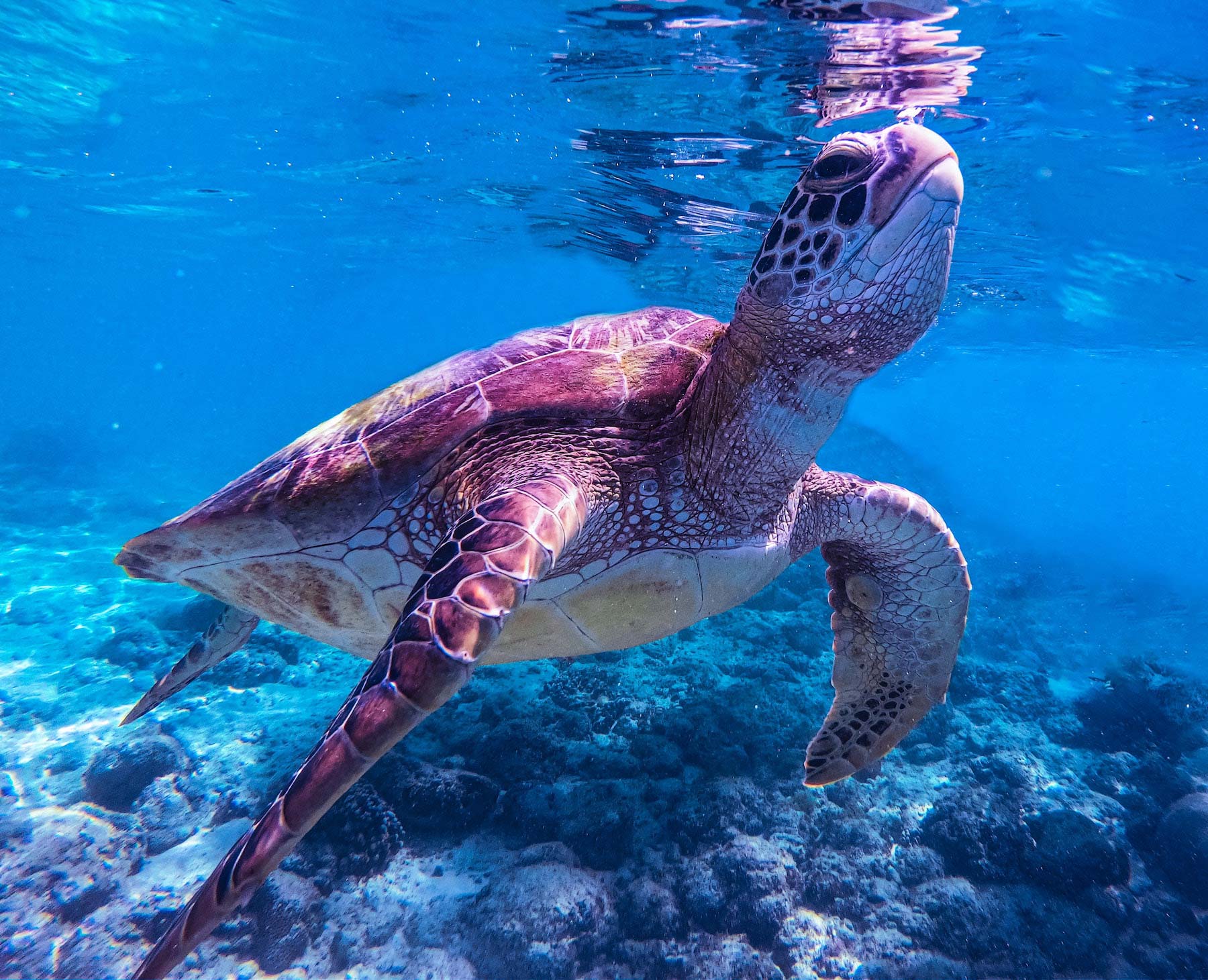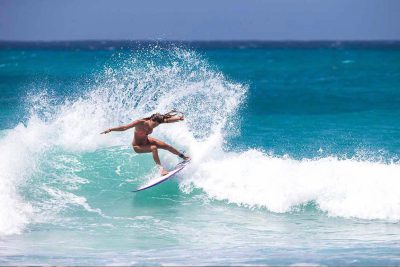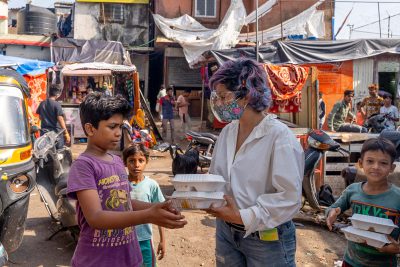Estimated reading time: 2½ minutes
Sea turtles have survived for more than 100 million years and today live in almost every ocean basin in the world. There are seven different species – Green, Loggerhead, Hawksbill, Leatherback, Kemp’s Ridley, Olive Ridley and Flatback – but six are either endangered or critically endangered.
Turtles are migratory, travelling between foraging and nesting grounds, and to warmer waters in colder seasons. They can travel thousands of miles and even cross entire oceans. Loggerheads may travel from Japan to Mexico, for example, while Leatherbacks may travel from Indonesia to California and then up to Alaska.
In the last 200 years, turtles have been heavily targeted by people for their eggs, meat, skin and shells, but it is the commercial fishing industry that is driving these incredible creatures right to the brink of extinction. And all because we eat fish.
The Fishing Industry Kills Turtles
The World Wildlife Fund states that “the single biggest threat to most sea turtles is fishing gear”. This is because nets are indiscriminate. They don’t just capture the species targeted, they catch and can kill any animal who is unlucky enough to get caught in their path. Hundreds of thousands of turtles are caught and killed this way every year.
And it’s not just turtles. An estimated 50 million sharks and rays, 300,000 small whales and dolphins, and 300,000 sea birds, including the iconic albatross, are also killed as “bycatch”. The industry calls by-catch “accidental” but it’s no accident; it is inevitable. If you’re dragging vast nets through waters where turtles, whales, and diving seabirds live, they do not stand a chance.
While conservationists and governments discuss the problem of bycatch, the carnage continues. There is only one way to end it: we need to stop supporting the commercial fishing industry, and that means we need to stop buying fish.
Sea Turtle Farming
It’s not just sea turtles in the oceans who are in trouble. There is one appalling sea turtle farm in the Cayman Islands where visitors swim with endangered green sea turtles and pick them up to be photographed with them. These visitors are kept in ignorance. They do not know how stressful this is for the turtles, nor that these are solitary animals who need the wide open oceans but instead are crammed together in shallow concrete tanks. And there is another secret that is kept from them: this is not just a visitor attraction. This is a working farm, where thousands of these endangered animals are bred to be slaughtered for their meat every year.
Conditions at this farm are every bit as bad as any other factory farm. When World Animal Protection investigated, it found evidence of biting sickness, stress, inbreeding and cannibalization. Some animals were even born without eyes.
You Know What We Have To Do!
Most of us are unlikely to visit the turtle farm in the Cayman Islands (although we can avoid visiting any captive animal who is not in a reputable and caring sanctuary). But the very best way to protect sea turtles – indeed the only way – is to stop eating fish. And when we do that, we are protecting the oceans, biodiversity, sea turtles, and all other marine species, including, of course, the fish themselves.
